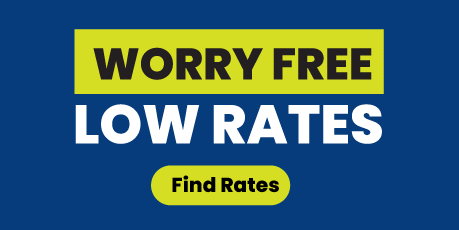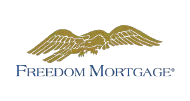Conventional Refinance

A conventional refinance mortgage loan is a loan that conforms to established guidelines for the size of the loan and a borrower's financial situation.
Conventional refinance loans may have lower interest rates than jumbo, FHA, or VA refinance loans.
Conventional Refinance Mortgage Loans: The Essentials
For many individuals, a mortgage is the most significant financial commitment they will ever make. Whether you are a first-time homebuyer or a homeowner looking to refinance, choosing the right mortgage product that suits your needs, budget, and financial goals is essential. Conventional refinance mortgage loans are one of the most popular options for homeowners who want to replace their existing mortgage with a new conventional refinance mortgage. This article will provide an in-depth overview of conventional refinance mortgage loans, covering everything from eligibility requirements, benefits, and drawbacks to the best ways to get approved for one.
What is a Conventional Refinance Mortgage Loan?
A conventional refinance mortgage loan enables homeowners to refinance their existing mortgage with a new conventional mortgage loan.
It is an alternative to government-backed refinance products like FHA or VA loans, which are backed by the Federal Housing Administration or the Department of Veterans Affairs, respectively.
The main difference between a conventional loan and government-backed refinance loans is that conventional loan refinance loans are not insured or guaranteed by the government, meaning that borrowers take on greater responsibility for the loan.
Conventional refinance mortgage loans come in two main categories: rate-and-term conventional refinance loans and cash-out conventional refinance loans. A rate-and-term refinance mortgage lowers the interest rate or changes the loan term, while a cash-out refinance mortgage allows borrowers to take out additional cash using the equity in their home. Depending on the borrower's situation, they may choose one type over the other.
Eligibility for Conventional Refinance Mortgage Loans
Like any other mortgage product, eligibility requirements for conventional refinance mortgage loans vary depending on the lender and the loan product.
However, some general criteria are used to evaluate borrowers' qualifications for both conventional mortgages and refinance loans:
Credit score:
Creditworthiness is critical for mortgage lenders when determining if a borrower may qualify for a conventional refinance mortgage loan.
Generally, borrowers need a credit score of 620 or higher to qualify for a conventional refinance mortgage loan.
However, higher credit scores may help borrowers get better interest rates and increase their chances of loan approval.
Debt-to-income ratio (DTI):
DTI calculates a borrower's monthly debts compared to their monthly income. The maximum DTI for conventional refinance mortgage loans varies by the lender but typically ranges between 36% and 50%. A lower DTI is desirable since it shows that the borrower has more financial capacity to cover their monthly mortgage payments.
Equity in the home:
The amount of equity in your home loan balance is a significant factor when considering a cash-out refinance mortgage loan.
Generally, borrowers need at least 20% equity in their home to be eligible for a cash-out refinance mortgage loan. However, some lenders may offer loan products with lower home equity amount requirements.
Income and employment history:
Lenders want to ensure borrowers have a stable income source and employment history to repay their mortgage loan over time.
The borrower may need proof of employment, income, and tax documents to verify their financial stability and capacity to repay the loan.
Benefits of Conventional Refinance Mortgage Loans
Conventional refinance mortgage loans offer several benefits to homeowners who want to refinance their mortgage:
Lower Interest Rates:
If interest rates have fallen since the borrower took out their first mortgage, refinancing with a conventional refinance mortgage loan could help them lower their interest rate, potentially saving them thousands of dollars over the life of their loan.
Flexible Terms:
Conventional refinance mortgage loans offer a range of loan terms, so the borrower may choose one that fits their budget and long-term financial goals.
A shorter-term loan, for instance, means the borrower may pay off their entire loan balance earlier and save on the interest rate.
Elimination of Private Mortgage Insurance (PMI):
If the borrowers have built up enough equity in their home, refinancing with a conventional refinance mortgage loan may allow them to lower monthly payments and eliminate PMI, which is an additional monthly fee that protects lenders in case the borrower defaults on their loan.
Drawbacks of Conventional Refinance Mortgage Loans
Like any other mortgage products, conventional refinance mortgage loans also come with some drawbacks, including:
Higher Closing Costs:
Refinancing with a conventional refinance mortgage loan generally involves paying closing costs, ranging from 2% current mortgage loan amount to 5% of the loan amount. The borrower will need to consider these thoughts when considering a conventional mortgage loan refinancing.
Higher Credit Score Requirements:
Generally, conventional refinance mortgage loans require a higher credit score than government-backed refinance loans.
Borrowers with poor or fair credit may need help to qualify for a conventional refinance mortgage loan.
Less Flexibility:
Conventional refinance mortgage loans are less flexible than government-backed refinance loans regarding credit score requirements, loan-to-value ratios, or other lending criteria.
How to Get Approved for Conventional Refinance Mortgage Loans
If a borrower is considering a conventional refinance mortgage loan, there are some steps they may take to improve their chances of getting approved:
Check your credit:
The borrower must start by checking their credit score and report to ensure no errors or inaccuracies. They should also pay off any outstanding debts dragging their credit score down.
How does a borrower obtain a credit report?
Obtaining a credit report may be simple if the borrower follows the proper steps.
First, the borrower should know that everyone is entitled to a free credit report once a year from each of the major credit bureaus: Equifax, Experian, and TransUnion.
The borrower must go to Annual Credit Report.com or contact the bureaus directly.
It is recommended the borrower staggers their requests throughout the year to keep track of their credit regularly.
Additionally, some credit cards and banks offer free credit reports as part of their services. By obtaining and reviewing their credit report, a borrower may stay informed of their credit status and address any errors or issues that may be on it.
Save for closing costs:
Closing costs can add up quickly when refinancing with a conventional refinance mortgage loan, so The borrower will need to make sure they have enough money saved before applying for the loan.
Also, the closing costs may be rolled into the loan's principal. The borrower will need to compare both and make an informed decision.
Shop around:
Borrowers will need to take the time to research different mortgage lenders and compare their mortgage offers. Look at interest rates, fees, and other factors to find the best deal for their situation.
By doing their homework and improving their chances of getting approved, the borrower may find the right conventional refinance mortgage loan for their needs.
Conclusion of Conventional loan refinance:
Refinancing a conventional mortgage loan means taking out a new loan with more favorable terms and using it to repay the existing loan.
Refinancing may help borrowers save money in the long run by securing a lower interest rate, reducing monthly payments, and shortening the loan term.
To qualify for refinancing, borrowers must typically have a good credit score, a stable employment history, and sufficient home equity.
Refinancing can be a smart financial move, especially if the borrower plans to stay in the home for several years.
However, it's essential to carefully consider the costs associated with conventional refinancing of mortgage loans, such as closing costs and prepayment penalties, to ensure that the potential savings outweigh the expenses.
Overall, refinancing a conventional mortgage loan can be an excellent option for homeowners looking to improve their financial situation and reduce the burden of their monthly mortgage payments.
Frequently Asked Questions (FAQs)
Q. What is a conventional refinance mortgage loan?
A. A conventional refinance mortgage loan allows homeowners to replace their existing mortgage with a new loan with different terms, typically to get a lower interest rate, change the loan term, or access equity in their home.
Conventional refinance mortgage loans can refinance primary residences, second homes, and investment properties. Unlike an FHA or VA refinance loan, the loan is "conventional" because it is not backed by the government.
The lender sets the terms and requirements of a conventional refinance mortgage loan, and borrowers must meet specific credit and income criteria to qualify.
Q. May a borrower qualify for a conventional refinance mortgage loan with bad credit?
A. It may be challenging to qualify for a conventional refinance mortgage loan with bad credit, as conventional loans typically require borrowers to have good credit scores. Most lenders consider a credit score of 620 or higher to be a good score for a conventional refinancing loan.
However, some lenders may be willing to work with borrowers with lower credit scores, particularly if they have a solid financial history in other areas, such as steady employment and a low debt-to-income ratio.
If a borrower has bad credit, it may be helpful to improve their credit score before applying for a conventional refinance mortgage loan.
This may include paying off debts, making all payments on time, and disputing any errors on your credit report.
Alternatively, they may explore other refinancing options, such as an FHA or VA loan, which may be more flexible regarding credit requirements.
Q. What is the difference between a conventional refinance mortgage loan and other types of refinancing?
A. The main difference between a conventional refinance mortgage loan and other types of refinancing, such as FHA and VA loans, is that with conventional refinances, loans are not backed by the government.
This means that conventional loans are subject to the lender's underwriting requirements and guidelines, while government-backed loans have specific criteria set by the government that lenders must follow.
Another difference is that conventional loans typically require a higher credit score and a larger down payment than government-backed loans.
For example, FHA loans may be available to borrowers with a credit score as low as 580 and require a down payment of as little as 3.5%, while conventional loans may require a credit score of at least 620 and a down payment of 5% or more.
However, conventional loans often have more flexibility regarding loan terms and fees. Borrowers may be able to choose from various loan terms and interest rates. They may have more options when paying for closing costs and other expenses associated with a more conventional loan or refinancing.
Ultimately, the best type of refinancing for the borrower depends on their financial situation and goals.
The borrower must shop around and compare the different loan options to find the one best for them.
Q. What are the fees associated with a conventional refinance mortgage loan?
A. There are several fees associated with a conventional refinance mortgage loan. These fees can vary depending on the lender, the location of the property, and other factors.
Here are some standard fees you may encounter when refinancing with a conventional loan:
-
Application Fee: Some lenders charge an application fee when you apply for a refinance. This fee covers the cost of processing your application and may be non-refundable.
-
Appraisal Fee: An appraisal fee is charged to have a professional appraiser assess the value of your home. This fee can vary based on the location and size of your property.
-
Title Search and Title Insurance: A title search fee covers the cost of ensuring no liens or other issues with the property's title. Title insurance protects the lender if any title issues arise after the refinance.
-
Origination Fee: Some lenders charge an origination fee to cover the cost of processing and underwriting the loan.
-
Credit Report Fee: Lenders may charge a fee to obtain a copy of your credit report.
-
Prepayment Penalty: Some lenders may charge a penalty if you pay off your existing mortgage early, so checking for this fee before refinancing is essential.
-
Closing Costs: Closing costs can include various fees, such as attorney fees, notary fees, and taxes.







